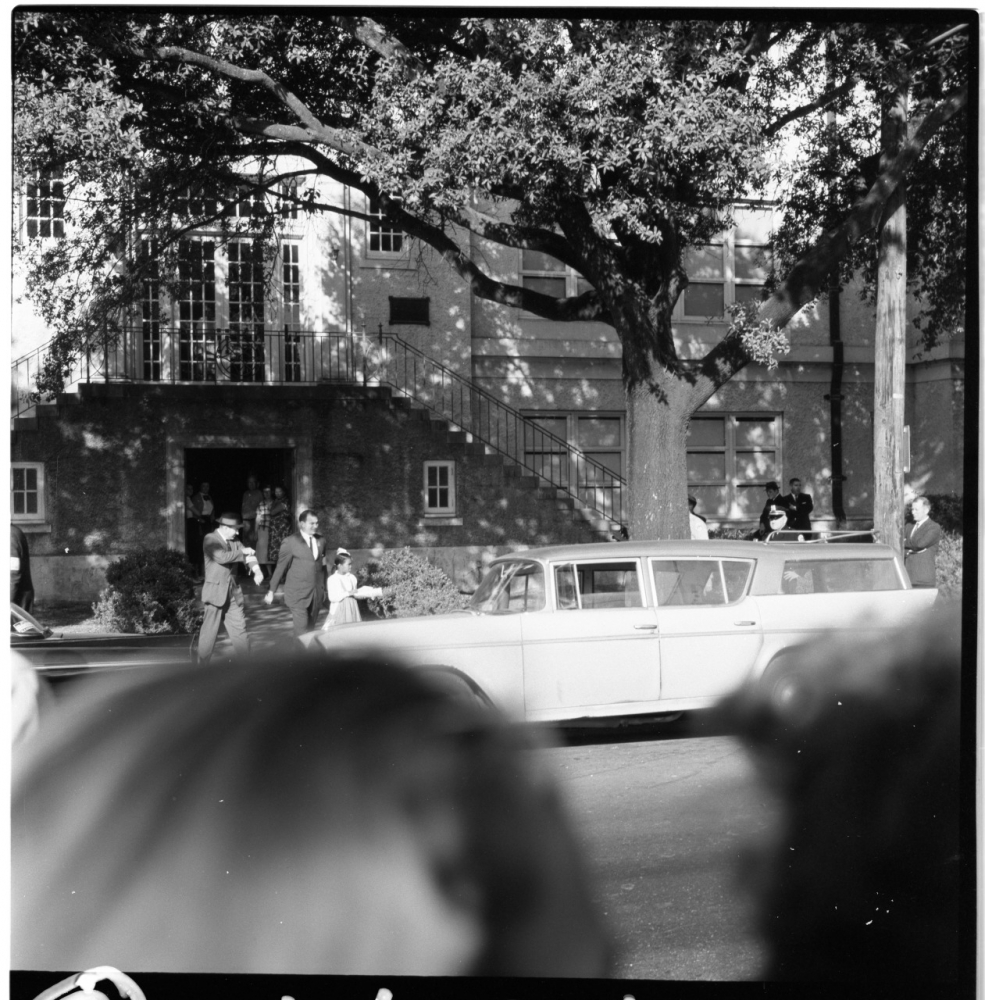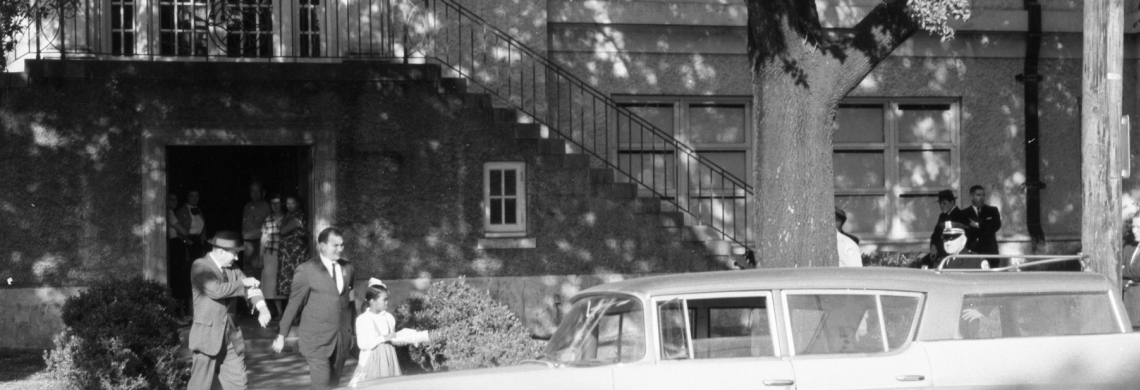As first-grade students, Leona Tate, Gail Etienne, and Tessie Prevost made history on November 14, 1960, as the first African American students to attend McDonogh 19 Elementary School. Today, they lend their names to the Tate, Etienne, Prevost (TEP) Center, an exhibit space, social justice education center, and senior housing facility that has acquired the McDonogh 19 school building and will open its doors in spring 2021. In commemoration of the 60th anniversary of New Orleans school desegregation, THNOC has announced an initiative to work with the Leona Tate Foundation for Change and the TEP Center to create educational programs over the course of the coming year.
In addition, THNOC is offering its members at the Merieult Society level and up–those who give $100 or more–the option to designate $50 toward the Leona Tate Foundation for Change and the TEP Center.

Tessie Prevost is shown outside of McDonogh 19 Elementary School in November 1960. The building is now home to the TEP Center. (The Jules Cahn Collection at THNOC, 1996.123.1.107)
“These students made history and brought positive change to the community, and we are proud to help tell their story through our programs and holdings, which include Leona Tate’s personal donations and other materials related to the school-desegregation fight,” said THNOC President and CEO Daniel Hammer.
On the same day that Ruby Bridges desegregated the nearby William Frantz Elementary School, Tate, Etienne, and Prevost—all age 6–were undergoing the same experience at McDonogh 19. The city of New Orleans will stage a proclamation ceremony for the “New Orleans Four” at 9 a.m. Saturday, November 14, at Gallier Hall, 545 St. Charles Avenue. Due to COVID-19 distancing requirements, the ceremony is not open to the public. The TEP Center is instead inviting the public to participate in an online tribute to the New Orleans Four. Find more information at tepcenter.org.
In November of 1960, six years after the US Supreme Court’s ruling in Brown v. Board of Education found segregation by race in public education to be unconstitutional, New Orleans’s public schools began the process of integration. (Video from THNOC's NOLA Resistance Oral History Project)
Explore the history
Starting in 1990, Tate and The Historic New Orleans Collection have worked together to preserve and share artifacts and memories that tell the story of the historic events of November 14, 1960, and the days beyond. Among the current THNOC resources and for those wishing to learn more about Leona Tate and her fellow students in their role as civil rights pioneers are:
- Oral histories recorded by Leona Tate, Tessie Prevost Williams, and Gail Etiénne-Stripling are part of the NOLA Resistance Oral History Project, a resource for educators and students for study of the New Orleans civil rights story.
- A video excerpt of Leona Tate’s oral history recalling her experiences on November 14, 1960.
- A trove of holiday greeting cards from around the country that were mailed to the girls in the days following national news coverage of their ordeal at the schools.
- An online lesson plan for educators that features testimony from Tate, Etiénne-Stripling, and Prevost, along with more stories from NOLA Resistance.
Support the mission
To designate $50 of your THNOC membership contribution to the TEP Center, select this option when you join or renew your membership. Only members at the Merieult Society level and above—a minimum contribution of $100—can participate. If you would like to learn more about the TEP Center, please visit their website at www.tepcenter.org.

